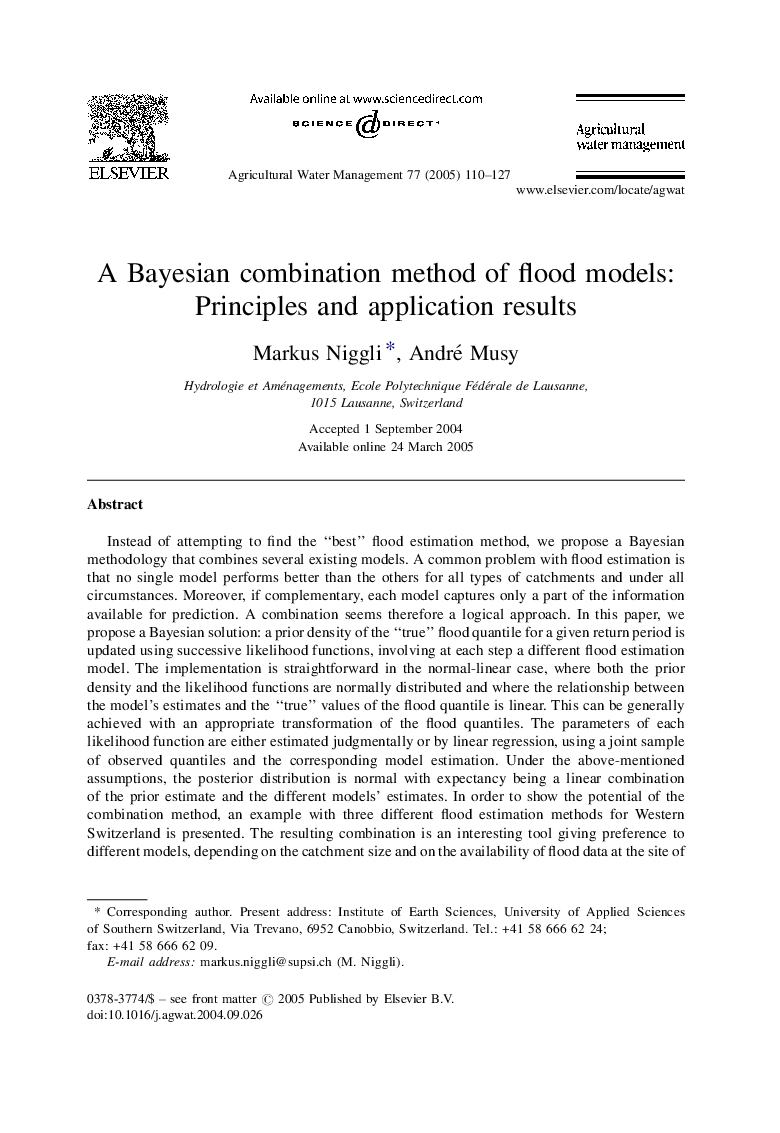| کد مقاله | کد نشریه | سال انتشار | مقاله انگلیسی | نسخه تمام متن |
|---|---|---|---|---|
| 9467375 | 1622994 | 2005 | 18 صفحه PDF | دانلود رایگان |
عنوان انگلیسی مقاله ISI
A Bayesian combination method of flood models: Principles and application results
دانلود مقاله + سفارش ترجمه
دانلود مقاله ISI انگلیسی
رایگان برای ایرانیان
کلمات کلیدی
موضوعات مرتبط
علوم زیستی و بیوفناوری
علوم کشاورزی و بیولوژیک
علوم زراعت و اصلاح نباتات
پیش نمایش صفحه اول مقاله

چکیده انگلیسی
Instead of attempting to find the “best” flood estimation method, we propose a Bayesian methodology that combines several existing models. A common problem with flood estimation is that no single model performs better than the others for all types of catchments and under all circumstances. Moreover, if complementary, each model captures only a part of the information available for prediction. A combination seems therefore a logical approach. In this paper, we propose a Bayesian solution: a prior density of the “true” flood quantile for a given return period is updated using successive likelihood functions, involving at each step a different flood estimation model. The implementation is straightforward in the normal-linear case, where both the prior density and the likelihood functions are normally distributed and where the relationship between the model's estimates and the “true” values of the flood quantile is linear. This can be generally achieved with an appropriate transformation of the flood quantiles. The parameters of each likelihood function are either estimated judgmentally or by linear regression, using a joint sample of observed quantiles and the corresponding model estimation. Under the above-mentioned assumptions, the posterior distribution is normal with expectancy being a linear combination of the prior estimate and the different models' estimates. In order to show the potential of the combination method, an example with three different flood estimation methods for Western Switzerland is presented. The resulting combination is an interesting tool giving preference to different models, depending on the catchment size and on the availability of flood data at the site of interest. Moreover, it provides a posterior variance of the quantity of interest that is as small or smaller than the one of the “best” single model.
ناشر
Database: Elsevier - ScienceDirect (ساینس دایرکت)
Journal: Agricultural Water Management - Volume 77, Issues 1â3, 22 August 2005, Pages 110-127
Journal: Agricultural Water Management - Volume 77, Issues 1â3, 22 August 2005, Pages 110-127
نویسندگان
Markus Niggli, André Musy,